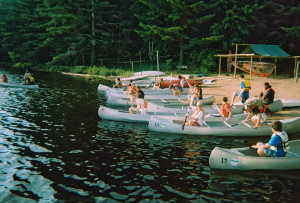
The causes of accidents in the outdoors are many, but have generally been characterized as being related to one or more of GEAR, PEOPLE, and ENVIRONMENT.
UNSAFE ACTS, UNSAFE CONDITIONS, and ERRORS IN JUDGMENT also contribute to the occurrence of accidents.
From the standpoint of gear, people, and environment, the following categories cover many, if not most, of the relevant risk areas:
(1) Participating Scouts (who are they?);
(2) Participating adults (who are they?);
(3) The venue (is the group familiar with the venue?);
(4) The weather (will the weather be a factor?);
(5) The type of activity (do the participants have the right skills?);
(6) Transportation (how do the participants get there and back?);
(7) Gear and supplies (do the participants have the correct gear and adequate supplies?);
(8) Size of the group (is the size of the group manageable?);
(9) Fatigue (are the participants too tired to do the activity safely?); and
(10) Parents (are the parents a help, or do they need help?).
The causes of accidents can be many and varied, can be predictable or unpredictable, can be temporary or long-term, and importantly, can be the result of the actions or demeanor of the adult leader. Remember, risk management involves thinking about an activity, so that the group can as safely as possible conduct the activity. Solely conducting the activity, without thinking about how the activity should be conducted, particularly with youth involved, is a recipe for a possible undesirable outcome.
